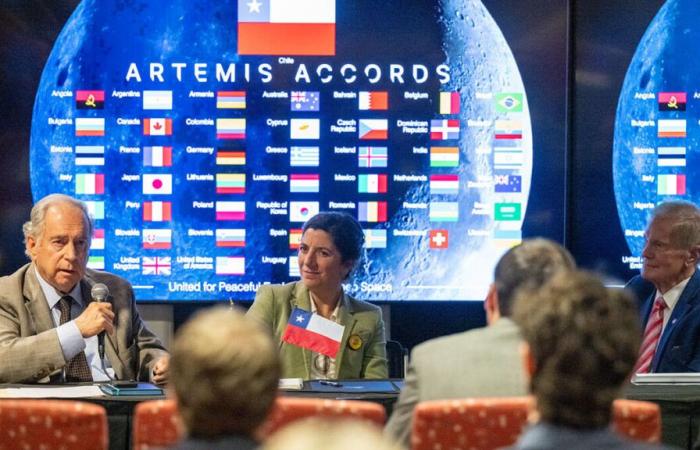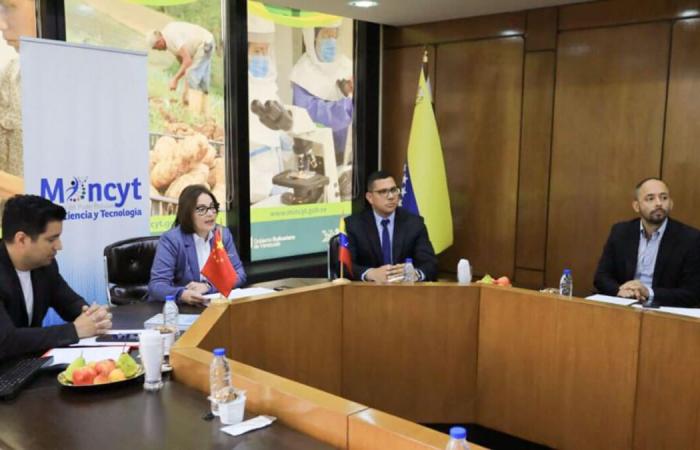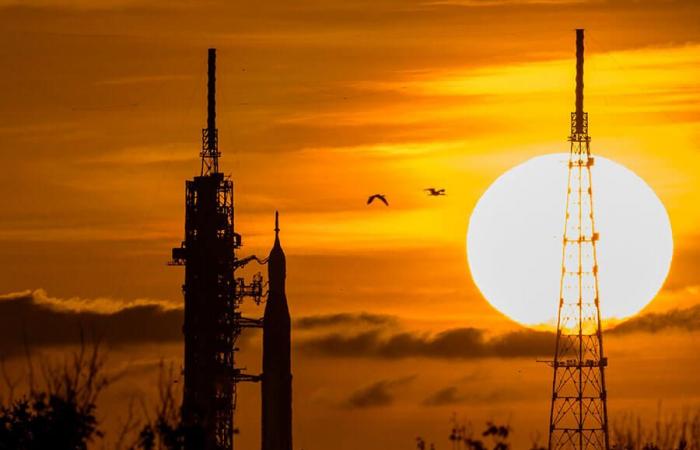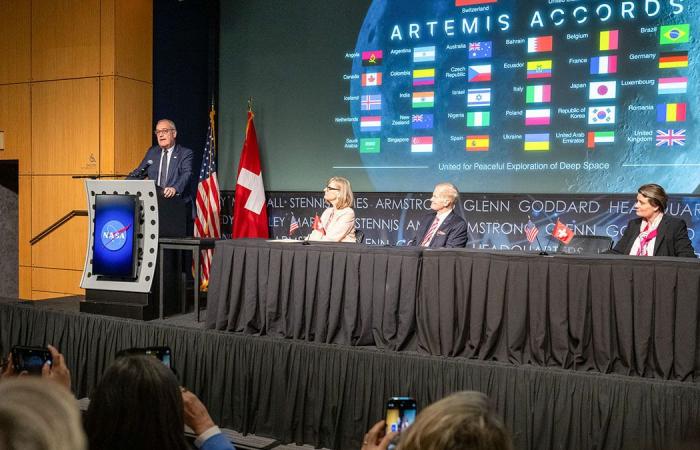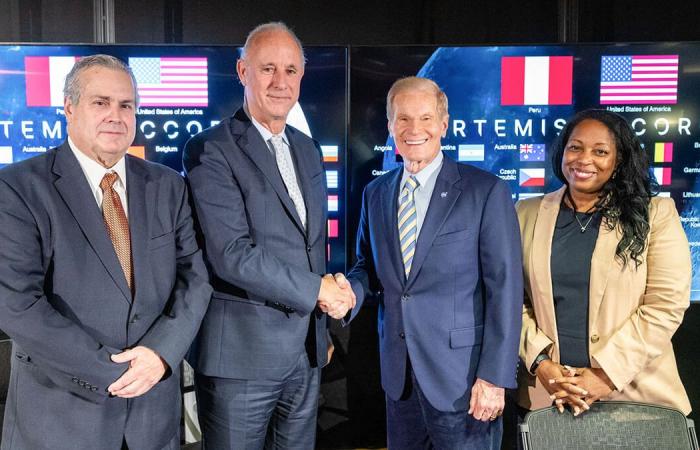- The originality of the ILRS project
- Trump administration takes over deals
For more than three years, the United States and the China-Russia duo have been engaged in a diplomatic duel unpublished to attract into their respective orbits of influence the greatest possible number of nations from all parts of the world.
Washington is leading the competition on the international scene and has just succeeded in making the Chilean government, led by Gabriel Boric, the 46th signatory of the so-called Artemis Accords.. It is a set of rules of behavior related to future NASA Artemis lunar missions, through which the adhering states commit to safe and sustainable activities within the framework of cooperation and the peaceful use of the exploration of outer space.
The approach of the Beijing-Moscow tandem is different and is further behind in gaining support for the cause of building a scientific base on the lunar surface, which would first be roboticized and then manned for exploration in depth the natural satellite of the Earth. With the approval of Presidents Xi Jinping and Vladimir Putin, the project is called the International Lunar Research Station -ILRS- and so far only 11 nations have joined it, in addition to its two sponsors, who aspire to bring together a fifty partners.
The latest country to join the Sino-Russian proposal is Senegal. The director of the brand new Senegalese Agency for Space Studies (ASES), astronomer Maram Kaire, joined the ILRS at the beginning of September. This signing took place on the occasion of the visit to China of an official Senegalese delegation led by the President of the Republic, Bassirou Diomaye Faye, to attend the China-Africa Cooperation Forum.
The originality of the ILRS project
Since the announcement of the ILRS initiative in June 2021, the bilateral strategic project involves countries closest to Moscow and Beijing's spheres of influence. On the Russian side, Azerbaijan, Belarus, Kazakhstan and Serbia are involved, as well as two South American countries with regimes close to the Kremlin: Nicaragua and Venezuela. China's influence was felt in Egypt, South Africa, Pakistan and Thailand, which also joined the project.
The ILRS project is led by the head of the Chinese Space Agency (CNSA), Zhang Kejian, with the direct participation of the Russian equivalent organization (Roscosmos) and its Director General, Yuri Borisov. Like the U.S. proposal, the ILRS has the full support of the Chinese and Russian foreign ministries, led by veteran diplomats Wang Yi and Sergei Lavrov, respectively.
Unlike the Artemis Accords, the ILRS is not only open to nations. Scientific organizations, official national and international institutions and companies are also eligible. These include the Belt and Road Alliance for Science and Technology, Space Science Innovation Center (Panama), African Space Development Foundation, Orbital Space (UAE). United Arab Emirates), the Belgrade Astronomical Observatory (Serbia), the South African Radio Astronomy Observatory, Spacetalk SA (Switzerland), the University of Bandar Lampung (Indonesia) and the National University of Science and Technology (Pakistan).
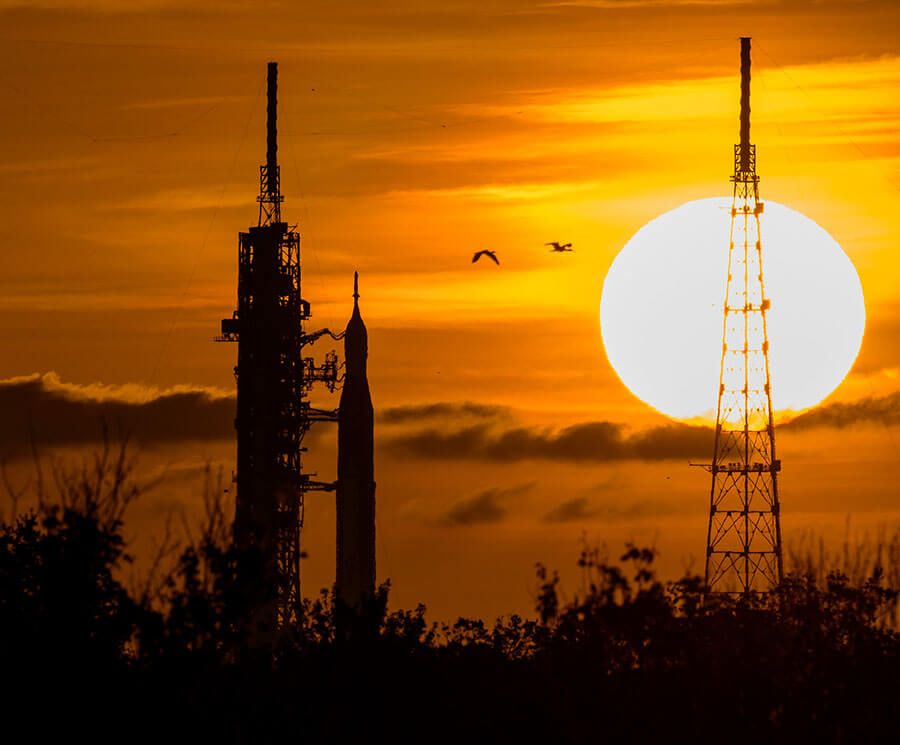
China and its Russian partner aim to install a first robotic base on the moon by the middle of the next decade. It would be equipped with energy production modules, scientific equipment, communication systems with Earth and lunar robots. The next step, around the mid-2040s, would be to expand and renovate the base to accommodate cosmonauts from both nations and partner countries engaged in research and experimentation. With Russia engaged in its war against Ukraine, it is China that bears the weight of the ILRS, whose precursor missions will be launched in 2026 (Chang'e-7) and 2028 (Chang'e-8) .
Trump administration takes over deals
The Biden administration hopes to close out 2024 and pass the baton to new leadership at the State Department and NASA with half a hundred nations signing the Artemis Accords. This perspective is possible, because it is what the vast majority of leaders of the space agencies of the countries signatory to the Artemis agreements have envisaged.
A total of 42 of them met during the 2024 edition of the International Astronautical Congress which was held in Milan (Italy) from October 14 to 18, in the presence of the executive director of the Spanish Space Agency (ESA), Juan Carlos Cortés.

There are many Ibero-American partner countries. In the Caribbean there is the Dominican Republic and on the South American continent there are Argentina, Brazil, Chile, Colombia, Ecuador, Mexico, Peru and Uruguay. Bolivia, Paraguay, Suriname and Guyana, the latter two countries being located on the northern Atlantic coast of the Americas, have not yet joined the agreement.
The Artemis agreements are open for signature for an indefinite period. To date, 46 states have already joined Washington's initiative. In addition to the ten countries in South America, there are eight countries in Asia, three countries in Africa, two countries in Oceania and 23 countries in Europe.

Of the many European states that have joined, the majority are member countries of NATO and/or the European Union such as Belgium, Cyprus, France, Germany, Greece, Iceland, Italy, Luxembourg, the Netherlands, Sweden, the United Kingdom. There is also neutral Switzerland and a group of former Soviet republics – Armenia, Estonia, Lithuania, Ukraine – and countries or fragments of the defunct Warsaw Pact, such as Bulgaria, Slovenia, Slovakia, Czech Republic , Poland and Romania.

